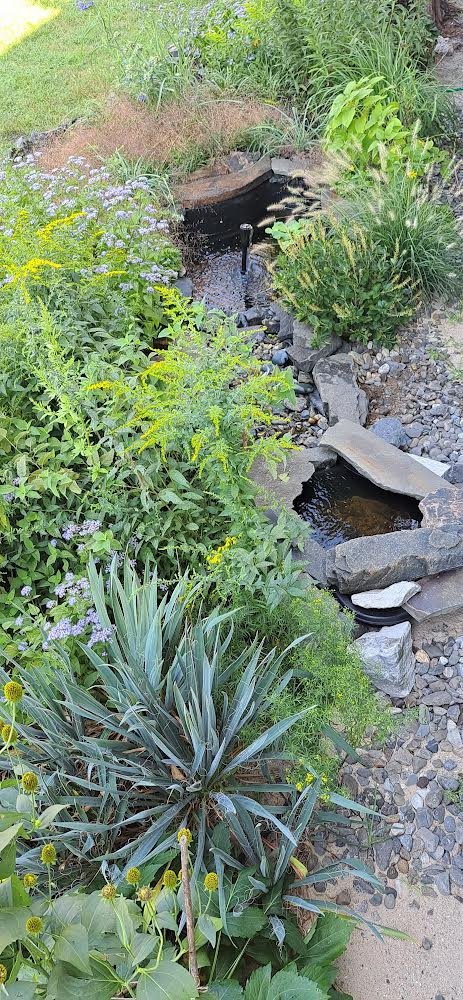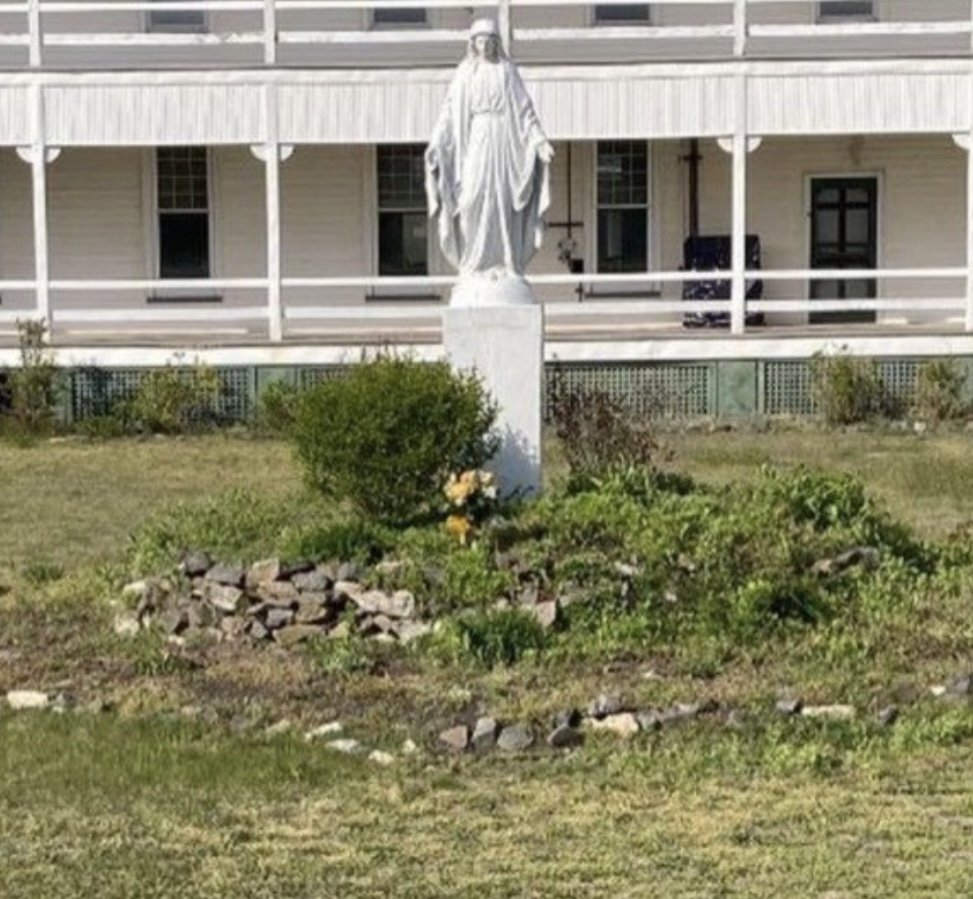How a Native Pollinator Garden Came to Be
By Katie Bliss, Head Gardener
For Pollinator Partnership’s newsletter Bee Friendly Gardening
Nestled among the dune grasses at New Jersey’s southernmost point, where the Atlantic Ocean meets the Delaware Bay, sits the Pollinator Garden (The Garden) at the Cape May Point Arts and Science Center (The Center).
The Center, which opened in 2023, found its home in the 38,000 ft2 Victorian structure that debuted as the Shoreham Hotel in 1889. In 1909, it became Saint Mary by the Sea, the summer retreat for the Sisters of Saint Joseph. Lovingly maintained by the Sisters for more than 100 years, The Center carries the legacy of the building and its dedicated stewardship of nature.
One of the water features
The Pollinator Garden, located in the courtyard of The Center, benefits from being set in the middle of the Atlantic flyway, a renowned ecological migration intersection of marine, avian, and insect species, notably the monarch butterfly.
Conceived in 2022, restoration of the garden commenced that year with the removal of many non-native and invasive plants.
In early 2023, The Garden received a financial grant from the Hardy Plant Society-Mid Atlantic Group to support the garden’s establishment, and another grant from the Xerces Society and Pinelands Nursery in the form of 1,100 plant plugs of 18 species of native pollinator plants. Today, there are more than 45 varieties of native woody plants and perennials sited in The Garden, all recognized for their contributions as a food source or host plant for a myriad of pollinators.
During the summer of 2023, The Pollinator Garden became a reality. Two water features were built, specifically designed for both migrating birds and the hundreds of pollinators either nesting or passing through. One features a rocky stream bed flowing into a pond to support dragonflies, damselflies, and their nymphs, while the other has a longer stream with both flat stones and shallow pools for bee and butterfly resting and hydration. Both features are sited to catch the rainwater run-off from the Center’s roofs.
The Garden provides color and nutrition throughout the seasons, starting with native spring blooming bulbs, including several varieties of Brodiaea and Camassia followed by columbines, redbud, blueberries, and beardtongue. Soon after, the garden is filled with the colors of liatris, echinacea, baptisia, milkweeds, and more. By late summer, The Garden is in its glory and so full that it’s hard to see the ground.
Before the garden transformation
After the garden transformation
The highlight of 2023 was the launch of Project Monarch, an innovative program that tracks the migratory movements of the monarch butterfly. Using digitally coded radio tags, an extremely lightweight solar panel is adhered to the backs of monarch butterflies allowing community scientists and volunteers to follow the speed and direction of monarchs during migration. Project Monarch is a joint venture between Cape May-based Cellular Tracking Technologies and the Cape May Point Arts and Science Center.
The Center is closed during the winter months, but the garden remains alive with overwintering pollinators. Plant stems and seed heads are left standing to provide food and shelter, while leaves are left in place to nurture the soil and host our natural inhabitants.
In just one season, The Garden has become home to butterfly and moth larvae, ground nesting bees, and hover flies. Like all gardens, it is a work in progress that will continue to evolve over the years ahead. And as a part of the Cape May Point Arts and Science Center, it will remain devoted to environmental protection, restoration, and conservation throughout the region.
For more information visit www.capemaypointsciencecenter.org.



